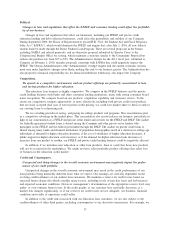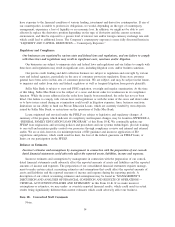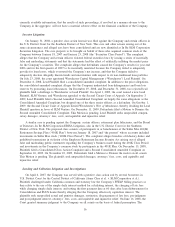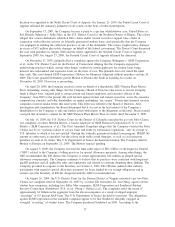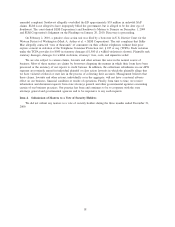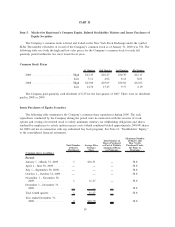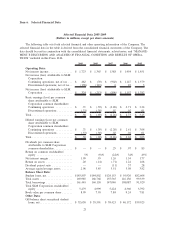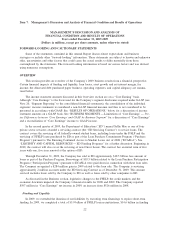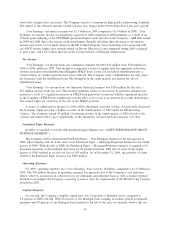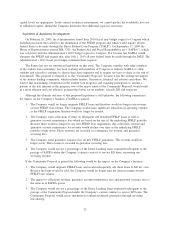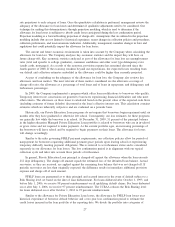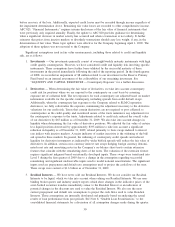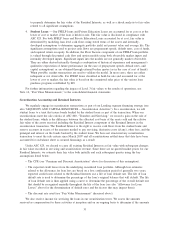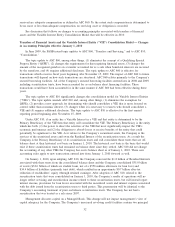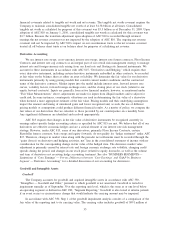Sallie Mae 2009 Annual Report Download - page 24
Download and view the complete annual report
Please find page 24 of the 2009 Sallie Mae annual report below. You can navigate through the pages in the report by either clicking on the pages listed below, or by using the keyword search tool below to find specific information within the annual report.through the Straight A conduit and $7.5 billion in Private Education Loan securitizations ($6.0 billion through
the Term Asset-Backed Securities Loan Facility (“TALF”)). We also raised $4.5 billion in term deposits at
Sallie Mae Bank which was used to originate Private Education Loans.
The Company began actively repurchasing its outstanding debt in the second quarter of 2008. The
Company repurchased $3.4 billion and $1.9 billion face amount of its senior unsecured notes for the years
ended December 31, 2009 and 2008, respectively. The debt repurchased had maturity dates ranging from 2008
to 2016. This repurchase activity resulted in gains of $536 million and $64 million in 2009 and 2008,
respectively. In January 2010, the Company repurchased $812 million of unsecured debt through a tender offer
for a gain of $45 million.
During 2009, the Company converted $339 million of its Series C Preferred Stock to common stock. As
part of this conversion, the Company delivered to the holders of the preferred stock: (1) approximately
17 million shares (the number of common shares they would most likely receive if the preferred stock they
held mandatorily converted to common shares in the fourth quarter of 2010) plus (2) a discounted amount of
the preferred stock dividends the holders of the preferred stock would have received if they held the preferred
stock through the mandatory conversion date. The accounting treatment for this conversion resulted in
additional expense recorded as a part of preferred stock dividends for the period of approximately $53 million.
From the transaction date through the mandatory conversion date of December 15, 2010, these transactions are
cash flow positive.
In January 2010, we terminated our existing ABCP facility and replaced it with a multiyear facility that will
allow us to fund federal loans at a much lower cost. The new facility provides funding of up to $10 billion in the
first year, $5 billion in the second year and $2 billion in the third year. The upfront fees were $4 million and the
interest rate is commercial paper issuance cost plus 0.50 percent, a sharp reduction from the fees and interest rate
associated with the prior facility. In 2008 and 2009, we paid upfront fees of $390 million and $151 million,
respectively, on our ABCP facilities.
In January 2010, we also became a member of the Federal Home Loan Bank of Des Moines (the “FHLB”)
through our HICA insurance subsidiary. Through this membership, the FHLB will provide advances backed by
Federal Housing Finance Agency approved collateral, which include federally-guaranteed student loans. The
amount, price and tenor of future advances will vary and will be determined at the time of each borrowing.
At December 31, 2009, 85 percent of our Managed student loans were funded for the life of the loans, up
from 70 percent in the prior year. We also had $12.5 billion in primary liquidity at December 31, 2009
consisting of cash and investments and committed lines of credit.
Loan Losses
On a “Core Earnings” basis, the loan loss provision for the year was $1.6 billion, of which $1.4 billion
was for Private Education Loans. Provision expense has remained elevated since the fourth quarter of 2008
primarily as a result of the continued uncertainty of the U.S. economy. The Private Education Loan portfolio
had experienced a significant increase in delinquencies through the first quarter of 2009; however, delinquen-
cies as a percentage of loans in repayment declined in the second, third and fourth quarters of 2009. The
Company believes charge-offs peaked in the third quarter of 2009 and will decline in future quarters as
evidenced by the 33 percent decline in charge-offs that occurred between the third and fourth quarters of 2009.
Asset Growth and Net Interest Margin
In 2009, the Company originated $21.7 billion in FFELP loans, a 21 percent increase over 2008. We
refocused our FFELP originations on our internal lending brands, which grew 40 percent over 2008. See
“LENDING BUSINESS SEGMENT — Loan Originations” for a further discussion.
Private Education Loan originations for 2009 were $3.2 billion, a 50 percent decline from 2008. This
decline is primarily a result of a continued tightening of our underwriting criteria, an increase in guaranteed
student loan borrowing limits and the Company’s withdrawal from certain markets. Beginning in 2008, the
Company increased its underwriting standards, and as a result, average FICO scores and the percentage of
23


